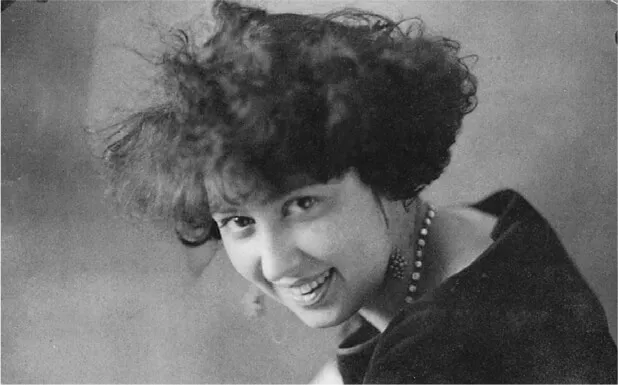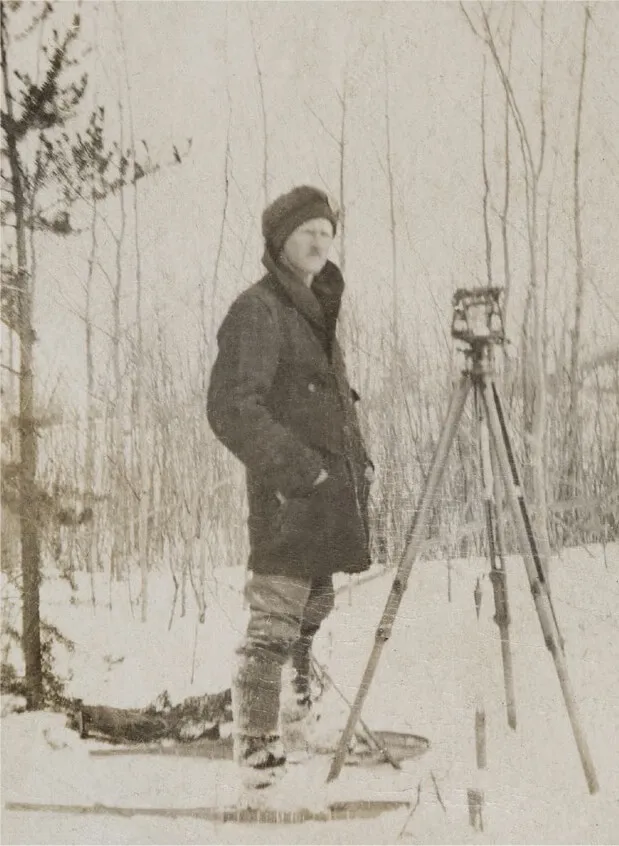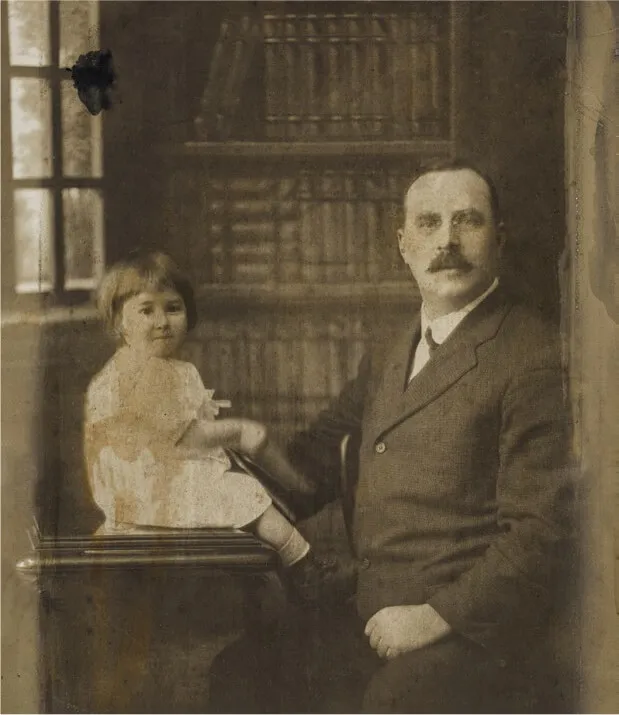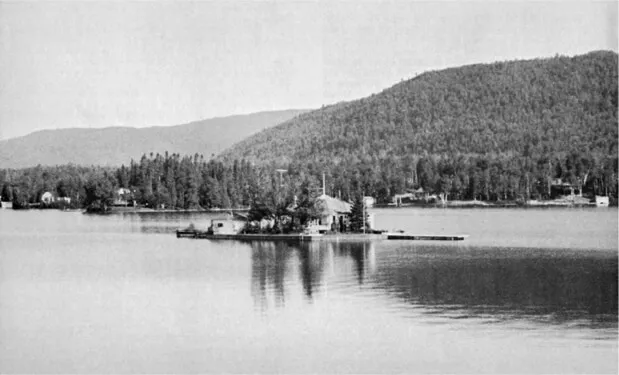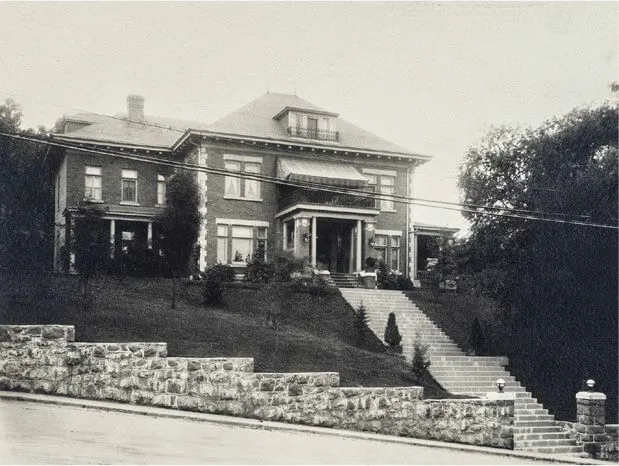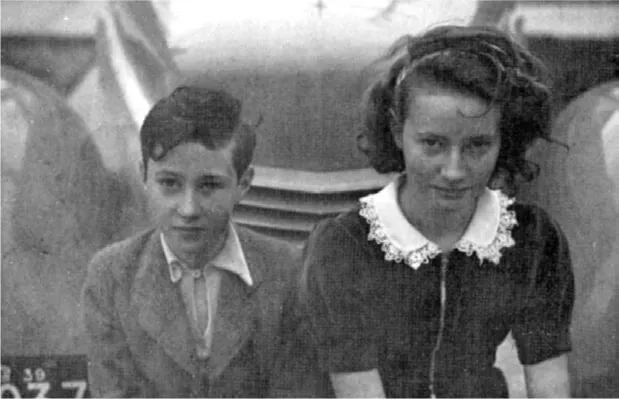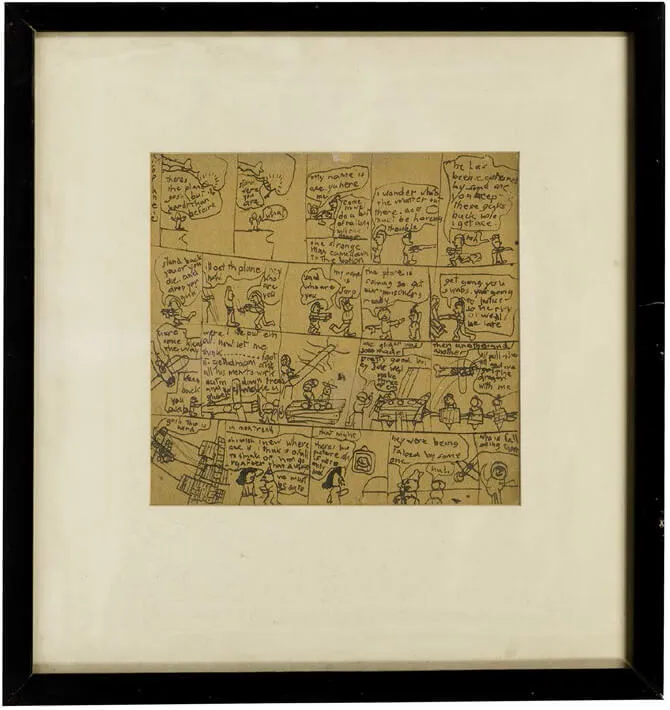![]()
PART ONE
1928–1962
![]()
CHAPTER ONE:
ORIGINS
In Michael Snow’s ancestry, the two solitudes of Canada are resolutely conjoined. His father, Gerald Bradley Snow, was of Anglo-Saxon lineage, his mother, Marie-Antoinette, was Quebecois.
FIGURE 2. Marie-Antoinette Lévesque, 1921.
Gerald Bradley Snow (1892–1964), later an engineer and a veteran of the First World War (he served in France as a lieutenant in the 48th Highlanders), attended high school at St. Andrew’s in Aurora and then studied at the University of Toronto. More reserved than his classmates, Bradley (the name he used commonly) excelled in school. His son inherited what could be called his artistic side from his mother and his deep understanding of technological complexities and processes from his father. He had an excellent understanding of how things work, of how things fit together.
FIGURE 3. Gerald Bradley Snow, c. 1920.
Bradley Snow was the son of A.J. Russell Snow (1857–1937) and his wife, Katie Beaty (1880–1940). A.J., who was born in Hull (now Gatineau), Quebec, became a lawyer who argued many cases before the Privy Council, served on several royal commissions, and was “Registrar of Alien Enemies” during the Great War.
The father of A.J. Russell Snow was John Allen Snow (1823–78), who was the son of John Snow (1793–c.1823) and Barbara Allen (b. 1799). Barbara was born in Woburn, Massachusetts, and moved to Canada when she was a year old. The move to Canada was initiated by Philomen Wright, a cousin of the Allens. Having acquired the rights to a large parcel of land on the area of the Ottawa River now known as Gatineau, he developed a small colony there. In 1816, when Barbara was seventeen years old, Philomen sent his son Ruggles to England to acquire cattle and engage workmen. There, he hired John Snow, a wheelwright from Chittlehampton, Devon. John and Barbara married on January 4, 1820.
Their son John Allen Snow was educated at St. Lawrence Academy in Potsdam, New York, and trained as a surveyor after he returned to Canada. He married Emma Catherine Bradley in 1850. Three years earlier, he became deputy provincial surveyor and mapped portions of, among other places, Muskoka. He was later sent by John A. Macdonald to survey the land that was under dispute in Manitoba during the Riel Rebellion.
Katie Beaty was the daughter of James Beaty (1831–99), who had been born at Ashdale Farm in the township of Trafalgar in the county of Halton, Ontario. James’s father, John (d. 1870), had immigrated to Canada from County Cavan in Ireland. James, who married his cousin Fanny Beaty in 1858, served as mayor of Toronto from 1879 to 1880 and was the founder of the newspaper, the Toronto Leader. He published one book, the Quaker-inspired Paying the Pastor: Unscriptural and Traditional (1885).
A.J. Russell and Katie Snow had seven children: Gerald Bradley, Kallie, Beaty, Geoffrey, Enid, Dimple, and Rhoda. When Geoffrey was killed in action at the Battle of the Somme during the Great War, Bradley might have been fundamentally shaken.
Early on, the Beaty side of Michael Snow’s ancestry made a name for itself in journalism and politics. The Snow side also produced a very distinguished attorney. Similar claims hold true for the artist’s mother’s family.
FIGURE 4. Elzéar Lévesque with his son Robert, June 1918.
Marie-Antoinette Françoise Carmen Lévesque (1904–2004) was an outgoing and vibrant woman; a classically trained pianist, she had a passion for the arts. One of four children, she had two brothers, Marcel (1908–79) and Robert (1917–2005), and a younger sister, Pierette (c.1906–19), who died at a convent school (Saint Joseph Academy) in Fitchburg, Massachusetts. Along with her talent as a pianist, she was also particularly adept at languages: she taught herself Spanish, Portuguese, and Russian. She was so skilled in Spanish that she was later employed to host a Spanish-language radio program for the Spanish consulate in Toronto. Their father was Elzéar Lévesque (1875–1937), the son of Delphine Tremblay and boat captain Elzéar Lévesque. The younger Elzéar studied at the Séminaire de Chicoutimi and law at Laval University. In 1884 he married Caroline Denechaud (1875–1942), daughter of Macaire Denechaud, a merchant, and Françoise Moreau.
Elzéar was a candidate in the provincial election of 1908 and the federal one of 1911. In 1922 he founded the Compagnie Autobus & Taxis 500. Later, he invested in the Compagnie Hydraulique du Saguenay; throughout his lifetime, he was active in the real estate development of Saint-Ambroise, Saint-Honoré, Chicoutimi, and Jonquière. He was the mayor of Chicoutimi from 1912 to 1922.
Caroline Denechaud was one of sixteen children born to Macaire and Françoise. Marie-Antoinette’s paternal great-grandfather was the Hon. Claude Denechaud, a representative for Quebec City in the province’s legislature. His father, Jacques Denechaud, a surgeon, arrived in Quebec from France in 1752 and was on duty at the hospital when the English won the Battle of the Plains of Abraham.
FIGURE 5. Lac Clair cottage.
In Chicoutimi, Elzéar and Caroline’s majestic house, a large brick structure on a hill, was surrounded by a low stone wall. Earlier, in 1912, Elzéar had built an island cottage at Lac Clair; when that burned down in 1918, he built a similar one, facing the other way, on the same island. Elzéar was a person who sought out the best. He had a superb wine cellar and assembled a large collection of books related to all things French.
After completing his studies in Toronto, Bradley worked as a surveyor in the Saguenay region of Quebec; his assignment was to prepare a report on the feasibility of building a rail line from Chibougamau to Chicoutimi (about 350 kilometres) — the project was not undertaken. A bit later, around 1924, he became the chief engineer and head of construction of two bridges in Chicoutimi, where he then resided.
He and Marie-Antoinette met at a ball given by Sir William Price, the Quebec-based lumber merchant. The two fell in love and decided to marry. When Marie-Antoinette told her father that she and Bradley intended to marry, Elzéar received communications and in-person visits from the local Catholic hierarchy, which threatened his daughter with excommunication if she married a Protestant. Despite the Church’s warnings, she went to Toronto, and there she and Bradley wed on October 29, 1924, with his family in attendance.
FIGURE 6. Lévesque family home, 220 Racine Street, Chicoutimi, 1922.
The strong bond between the young couple was possibly triggered because each had lost a sibling. In Marie-Antoinette’s case, her parents had taken her and her sister by train to the school in Massachusetts. When, after three months at the school, her sister was taken ill with the Spanish flu and died suddenly, her parents returned to the States to take their surviving daughter back to Chicoutimi.
The Snows settled in Toronto and, a bit later, Montreal. Their first child, Denyse, was born in 1925. Michael James Aleck arrived three years later in Toronto on December 10, 1928. In 1929 or 1930, the family moved to Montreal, where, in 1935, Bradley had a work-related accident in a tunnel that cost him his sight in one eye when it was crushed; the other eye was also seriously compromised when it was peppered with dust. During his recovery, Bradley decided to return to Toronto, where his family could look after him; Marie-Antoinette, Denyse, and Michael moved for a year to Chicoutimi.
Seven-year-old Michael first attended school in nearby Arvida — he recalled that earlier, in an ornery way, he had informed his parents he had no interest in attending school. On his first day he, without interference, walked out of class, went to the nearby highway, and attempted to hitchhike his way back to Chicoutimi, a distance of about thirteen kilometres. By chance, his uncle Marcel was driving by and picked him up, asking, “Bruder, what are you doing here?!” For many years after, his sister, Denyse, as well as his parents, grandparents, and uncles and aunts called Michael “brother.” Years later, when a friend called the house, Denyse answered and bellowed: “Brother, you’re wanted on the phone.” When Michael picked up the phone, the friend asked, “Are you some kind of monk?”1
During that extraordinarily snowy winter in Chicoutimi, the children had a wonderful pet, a gift from Elzéar, a St. Bernard dog named Buck. The children spoke French to the dog. Though completely bilingual, when in Chicoutimi, Marie-Antoinette always spoke to her children in English. Michael’s ability to speak French was hindered by the fact that the inhabitants of Chicoutimi, anxious to learn English, spoke to him only in English.
During one of the summers at Lac Clair, after their dog, Buck, died, Marcel arrived at the Lac Clair island cottage with a dog, which he gave to Denyse and Michael. Marcel explained that he had gone to the Montagnais reserve near Chicoutimi to buy some moccasins. He liked a dog he saw there enough to buy it, intending it as a gift for Denyse and Michael. The owner of the dog, who insisted that the animal was half fox, asked only for a bottle of beer in exchange for Miro. The children and mother brought Miro back to Winnipeg and then Toronto, where he lived with them for about three years.
FIGURE 7. Michael and Denyse Snow, 1939.
Even before their year there, the two children and their mother spent several summers at Lac Clair. Denyse remembered herself as an ordinary young girl who played with dolls. Michael, she recalled, played with his Meccano set, but he spent large amounts of time daydreaming and drawing.2 He has a precise memory of the island cottage: it “cover[ed] most of the island. It was like being on a boat that does not move. There was the land, the sand and the rocks.”
He cherished the cottage on the island, but another environment was equally significant to him — the magnificent house Elzéar and the architect Alfred Lamontagne designed and built on Racine Street in Chicoutimi.
FIGURE 8. Michael Snow, “Aeroplane Ace,” 1938.
The artist’s sister has a vivid recollection of her brother, at the cottage, in a trancelike state, looking out at Lac Clair.4 He created comic strips — one concerned “Aeroplane Ac...

